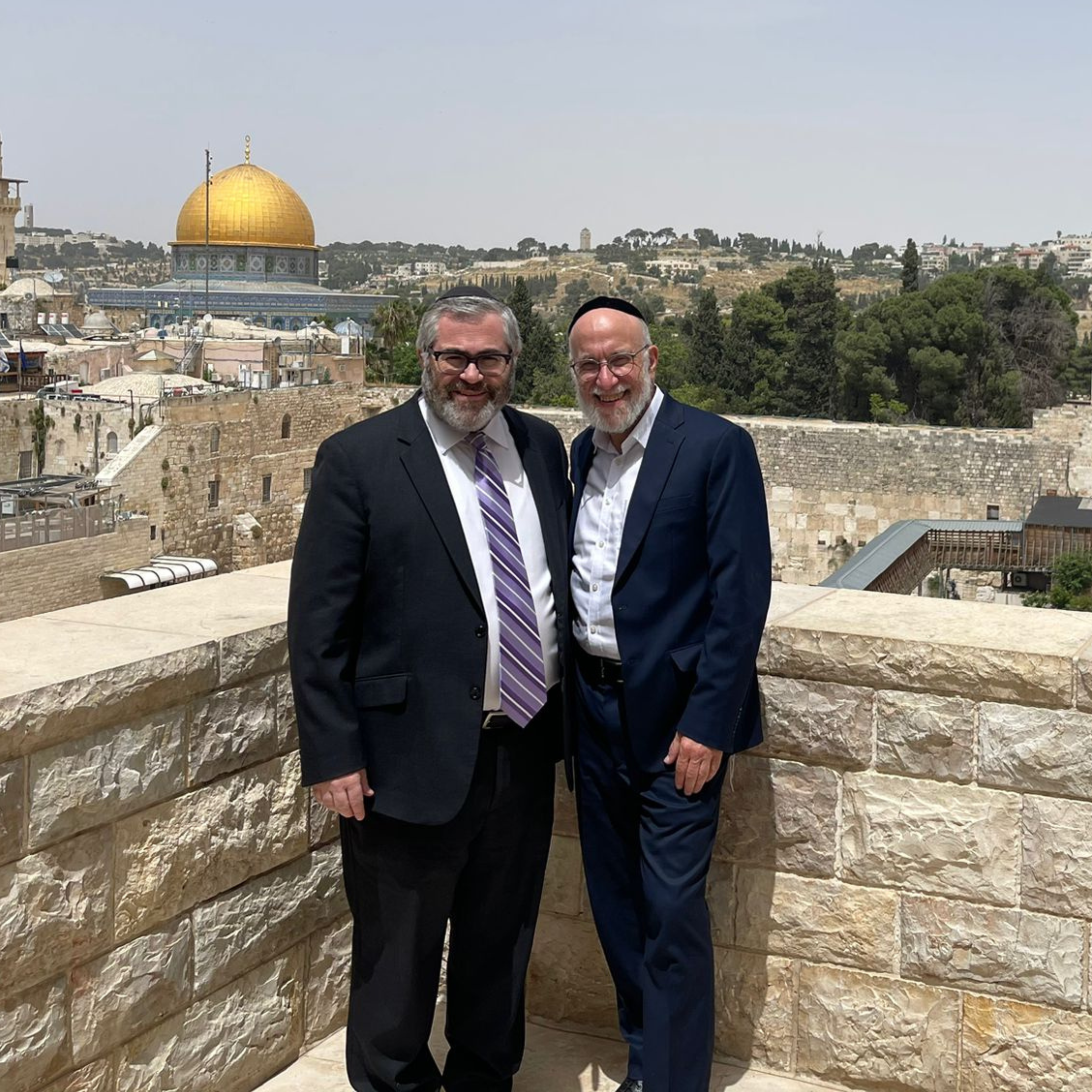In Sefer Bamidbar, all communication between God and Moshe seems to occur in the Mishkan (see Rashbam, Ibn Ezra and Chizkuni on Bamidbar 1:1). However, Ramban (3:14) tells us that the Sinai Desert is mentioned when God told Moshe to count the Levi’im because Mt. Sinai had been mentioned several verses earlier (3:1), and in order to make it clear that the commandment to count the Levi’im was communicated in the Mishkan and not on Mt. Sinai, the Sinai Desert is mentioned again. However, there are two other communications (3:5 and 3:11) between the mention of Mt. Sinai and the clarification that the counting of the Levi’im was commanded in the Mishkan, implying that these two weren’t in the Mishkan. Otherwise, the Sinai Desert should have been mentioned introducing the first communication after Mt. Sinai was mentioned, not the third.
Admittedly, this is not so straightforward, as Ramban doesn’t say it was the commandment to count the Levi’im that was communicated in the Mishkan, but the commandment to choose the Levi’im, and the two commandments in between are about choosing the Levi’im! To complicate matters further, the Levi’im seem to have been chosen at Mt. Sinai, before the Mishkan was built (after the sin of the golden calf, see Shemos 32:28-29 and Rashi on Bamidbar 3:12). Abarbanel presents it more cleanly, with the Torah telling us that even though the Levi’im were chosen after the sin of the golden calf, the Torah is teaching us that the commandment to count them took place in the Sinai Desert, i.e. in the Mishkan. But this indicates that the two previous communications didn’t take place in the Mishkan, despite being in Sefer Bamidbar.
Parashas Naso includes the gifts of the Nesi’im, (tribal leaders) which brings us back to the first day the Mishkan was fully operational (see Rashi on 7:1), allowing the communications taught before this to have occurred earlier, outside the Mishkan. In fact, Birkas Kohanim (the Priestly Blessing) immediately precedes the Mishkan’s inauguration (6:22-27), and Aharon gave this blessing to the nation before God’s divine presence filled the Mishkan (see Rashi on Vayikra 9:22). If God didn’t communicate with Moshe from the Mishkan until after His divine presence filled it, then the communication regarding the Priestly Blessing could not have occurred in the Mishkan.
Despite Birkas Kohanim being communicated before the Mishkan was built, Sifre Zuta (7:11) tells us that it was communicated on the very day the Mishkan became fully operational. This communication would seem to have occurred in Moshe’s tent, which he moved outside the camp after the sin of the golden calf (Shemos 33:7), and where God communicated with him (33:9), before the Mishkan was built. But there’s more to the story, at least according to some Midrashim.
When Moshe accounted for all the material donated for the Mishkan, the word “משכן” is mentioned twice (Shemos 38:21). The Midrash (Bamidbar Rabba 51:2 and Tanchuma 2/5) explains that Moshe asked God what he should do with the extra material, and God told him to use it to make a second Mishkan. Several suggestions are made as to what the purpose of this second Mishkan was, including: It was a smaller version of the regular Mishkan, put in the קדש הקדשים around the ארון (Eitz Yosef); it was where the broken Luchos were kept (Anaf Yosef); and that it refers to Moshe’s tent, which he called “אהל מועד” (Shemos 33:7), with the extra material used to expand it (Maharzo).
Yalkut Shimoni (737) tells us that this second Mishkan was the same exact size as the regular Mishkan, negating the first possibility (unless the same miracle that allowed the ארון to take up no space in the קדש הקדשים also applied to the second Mishkan). Midrash HaGadol (Shemos 38:21) refers to the regular Mishkan as the “משכן שכינה” (the Mishkan where the Divine Presence rested and the second Mishkan as the “משכן לבית מדרשו של משה” (the Mishkan for Moshe’s Beis Midrash), telling us explicitly (37:7) that this was Moshe’s tent, where the extra materials were used. [This doesn’t negate the possibility that the broken Luchos were kept in Moshe’s tent.] But there’s still more.
Midrash HaGadol (Bamidbar 9:1) is among the sources that teach us that when the Torah says God communicated with Moshe in the Sinai Desert, it means in the Mishkan, adding a short list of other commandments that were taught in the Mishkan (using the term “אהל מועד”): “In the אהל מועד he was told to make (or to anoint) the Mishkan; in the אהל מועד he was told to burn the [reddish brown] cow; in the אהל מועד he was told to put up the tent; in the אהל מועד he was told about all the ritual impurities.” But how could Moshe have been commanded to make the Mishkan from inside the Mishkan?
Even if the commandment to “put up the tent” refers to expanding Moshe’s tent, and “making the Mishkan” refers to putting it together on the day it became fully operational (or the wording is “to anoint the Mishkan,” as some Midrashim have it), which would allow these communications to have happened during the seven days of training—when the Mishkan was put together and taken down numerous times—how could the Midrash be saying that God spoke to Moshe in the Mishkan before His divine presence transferred there from Mt. Sinai (see Rashi on Beitza 5b and Ta’anis 21b), which didn’t happen until the “eighth day?” [If that’s what the Midrash is saying, then the communication about the Priestly Blessing could have occurred in the Mishkan too, even though it was before the Mishkan was fully operational.] On the other hand, if this Midrash is referring to Moshe’s tent (the other Mishkan) being where these communications occurred, how could it include the other commandments as being taught there—and not just those listed, but those alluded to (such as the commandment to count the nation)? Were all these commanded in Moshe’s tent rather than in the (regular) Mishkan?
The other Midrashim refer to the regular Mishkan as the “אהל העבודה” (the tent of the service, referring to the offerings brought there), and the second Mishkan as either the “אהל הדברות” (the tent of the communications) or the “אהל העדות” (the tent of the testimony). While the “דברות” could refer to Moshe teaching God’s communications to the nation, I would suggest it refers to the communications between God and Moshe that occurred there. Not just those communications that occurred between the sin of the golden calf and the regular Mishkan becoming fully operational, but also communications that occurred afterwards, with the following caveat: Any communication that occurred in Moshe’s tent after the Mishkan was built must have only been relevant for that generation. Once the Mishkan was fully operational, every commandment that was relevant forever (i.e. the 613 commandments, which had already been taught at Sinai) was taught there. But any communication that had to be taught to the nation before the Mishkan was fully operational—even if it was relevant forever—as well as those that were only relevant for that generation, took place in Moshe’s tent (i.e. the other Mishkan).
The census at the beginning of Sefer Bamidbar was only relevant for that generation, so it was commanded in Moshe’s tent—as were the other communications “in the Sinai Desert,” such as bringing the Korbon Pesach that second year—which didn’t apply the other 39 years. The anointing of the (regular) Mishkan was commanded in Moshe’s tent. So was the פרה אדומה, which needed to be taught before the Mishkan was built. Like the Priestly Blessings, it was taught on the day the Mishkan became fully operational, albeit before it was. Therefore, even though they applied to later generations too, they were taught in Moshe’s tent. [I’ve previously discussed the details of ritual impurities being taught before the Mishkan was fully operational because they took effect as soon as it was inaugurated .] The 70 elders being chosen? Only relevant to that generation, so God spoke to Moshe in the other Mishkan (as these Midrashim say explicitly). The commandment to count the Levi’im was only relevant to that generation, so it was commanded in the Sinai Desert (i.e. in the other Mishkan), but the Levi’im being chosen was relevant for future generations, so this was communicated at Sinai and/or in the regular Mishkan.
Having a second Mishkan, built to scale, allowed for the communications that were only relevant for that generation to be taken as seriously as those that applied to future generations, which were communicated in the regular Mishkan. Nevertheless, since this other Mishkan wasn’t as important for us, it was only hinted at in the verses, but expounded upon in the Midrashim.
Rabbi Dov Kramer recognizes that his approach to the second Mishkan is a חידוש; other possibilities can be sent to his gmail account, which uses the same handle as his social media accounts—RabbiDMK.











